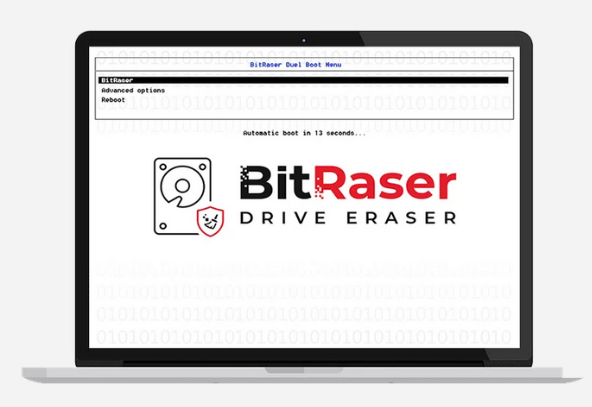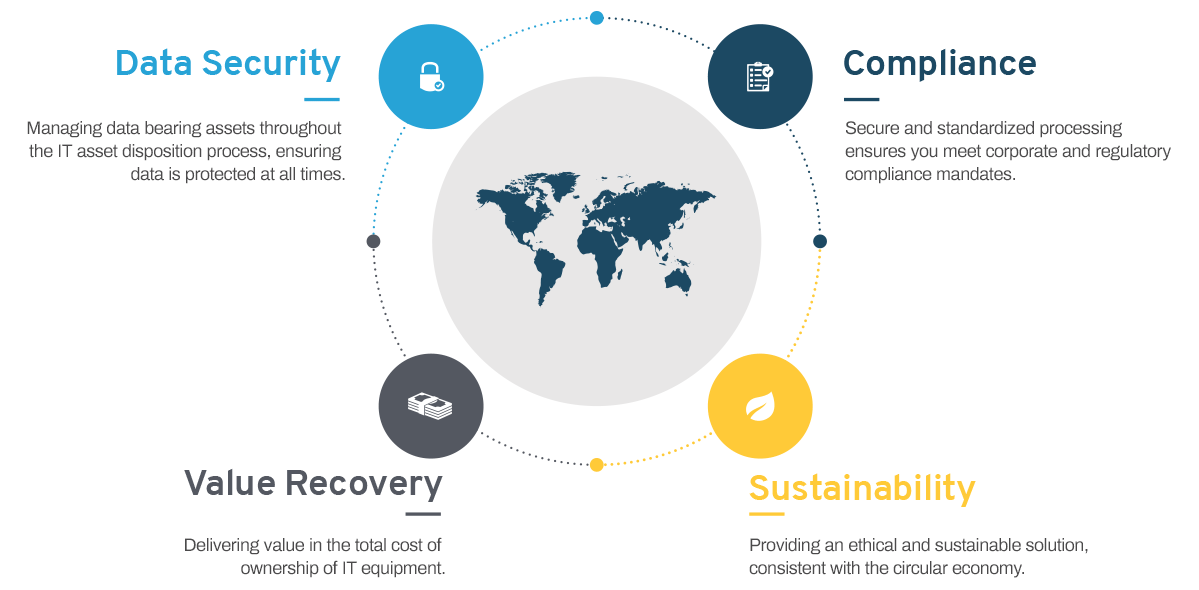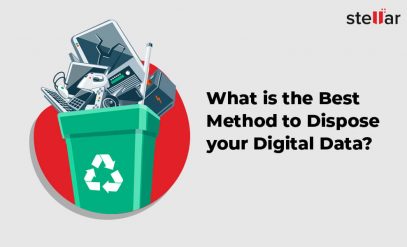You take environmental sustainability and IT Assets, combine them, and you get IT Asset Disposition (ITAD). This is the practice of reducing, reusing, and recycling IT assets so that the human strain on the environment is lessened by a fraction.
Another part of IT asset disposition has to do with recovering your investment in the assets. IT asset disposition is a subset of the ocean of IT asset management. This pertains to the all-around management of IT assets, from stock-taking right up to the end of its lifecycle.
Organizations usually handle ITAD in one of two ways.
- Internal ITAD: Where the company itself takes care of data sanitization and media destruction, using state-of-the-art data erasure software like BitRaser Drive Eraser (which is compliant with all major international data destruction standards).
- External ITAD: Where the company hires a service provider to do the work for them.
In this article, we’ll go deep into how ITAD works, why it’s important, and the ways to enforce it in your organization. Read on to know what is IT asset disposition.
The following image shows you what is ITAD and its multiple facets.
Here’s what ITAD does not mean
The D in ITAD is often mistaken to be “disposal”. That’s exactly what it’s not. Here, it means that the asset is being sold or otherwise managed responsibly. So care in managing assets is what makes IT asset disposition the preferred (and often mandated) process.
The function of IT Asset Disposition
- Data Destruction
Old media devices, like hard drives, contain data on them. But you can’t get rid of an IT asset without managing the data held in the asset.
- Hardware Management
When you’re auditing all of your IT assets, you will be able to identify faults and maintenance requirements. This will help you catch it early.
- Facilitates the 3 Rs
At the end of its lifecycle, you will dispose of an asset either by reselling it or by throwing it away. ITAD will help you identify which is the better option for environmental sustainability.
Why is IT Asset Disposition Vital?
With the current trend in how rapidly companies collect and consume data, there is a huge number of IT assets being added to the “used pile” every year. And if all of these were to end up in landfills, we’d quickly run out of space to throw our waste away.
This is the primary reason why ITAD is vital.
Another aspect of ITAD is data security, ie, wiping data from the device. You would definitely know about the sheer volume of data breach incidents happening worldwide. So unless you want your organization’s name added to this list, you need to take this step.
When it comes to data security, it’s not advisable to make any compromises. That leads you to the best in the business – BitRaser Drive Eraser.

This is a secure data wiping software that works on most device types like HDDs, SSDs, PATA, SATA, etc. BitRaser wipes the data beyond data recovery potential. So there’s no chance of a data leak.
And the way to verify this is by way of the automatically generated data deletion report. This report will authenticate the data deletion.
Further, BitRaser supports around 24 international data eraser standards of data deletion. So no matter where your business is based, you can use BitRaser to securely wipe your data.
Forming an ITAD Strategy: 3 Steps
- Form a dedicated team
IT Asset Disposition can’t be an afterthought. It should start right from when a media device gets installed in your organization. This is why having a dedicated team to look after this task will prove beneficial.
In almost all organizations, this is the IT department’s responsibility. Make sure you train the IT team on how to properly take stock of IT assets and record the information in a comprehensible way.
They should also be able to diagnose any problems in the servers and hard drives so that the chances of failure can be minimized.
Note: IT management should start from day one of when you procured the IT asset. But if you’ve failed to start from day one, it’s not too late.
- Lay out an IT Asset Disposition Policy
An IT asset disposition policy should cover all dimensions of data. This includes information like who has access to what data and when their access will be removed.
This will help maintain data integrity as well.
It should also cover aspects of how and where hardware will be stored and the way you will go about disposing of the hardware. Ensure that your plan covers all aspects of the regulatory laws pertaining to data disposal in your industry.
- Assign roles and responsibilities
An ITAD plan should be strictly followed. So from day one, executives should be assigned responsibilities that cover every aspect of your policy. This will help ensure that the process goes smoothly.
Organizations also have the option to outsource the ITAD service. An external team will be responsible to manage your IT assets. If you’re going with this option, ensure that you select a reputable service. Because they are, after all, managing confidential information.
The devices included in ITAD
All devices that can store data can come under the umbrella of ITAD. But in an organization’s point of view, it usually includes servers, CPUs, and hard drives.
In case your organization assigns work phones to certain executives, that phone should also come under the IT asset disposition policy.
In case you’re going with an IT asset management service, ensure they cover all the devices you need management for. It’s also important to pick a service that can customize its offerings to your needs.
Wrapping up
The safety of your data should always come first. And an ITAD policy is the best way to ensure that safety. If you’re responsible for IT in your organization, immediately enforce an IT asset management plan in your organization. This will help reduce the brunt of your work and also keep a track of your IT asset.








